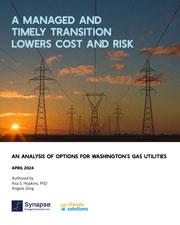A chronological archive of research and reports from Climate Solutions.
A Managed and Timely Transition for Washington's Gas Utilities
April 2024
This report explores how gas utilities can plan for the energy transition, cut climate pollution to zero, and protect low-income ratepayers. We specifically model the transition for Washington’s largest gas utility, Puget Sound Energy (PSE), and evaluate different pathways PSE can take to reduce its climate pollution. We examine the impacts on customers when the energy transition is planned for in a managed way versus a scattershot way, and how these impacts will be especially felt on low-income ratepayers. Read our report to learn more about how we can plan for an energy transition with the best outcomes for both climate and customers.
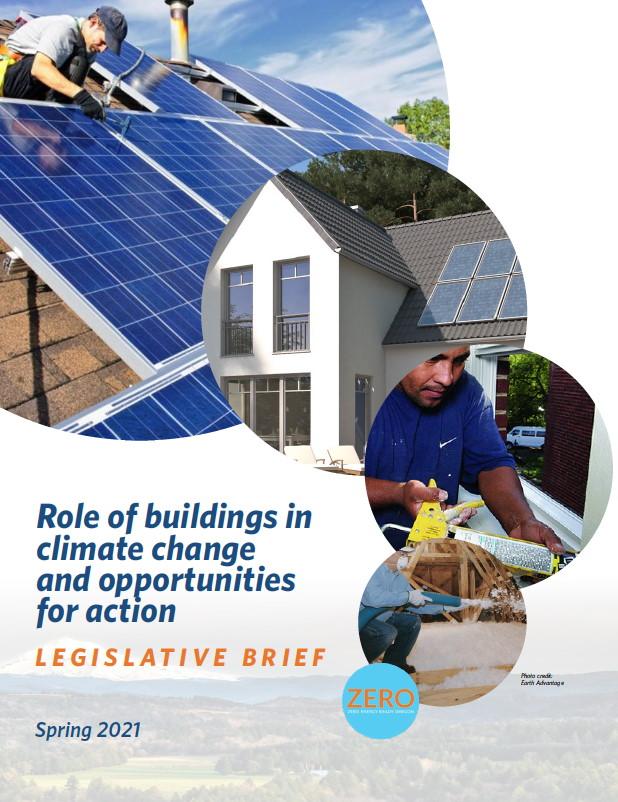 Role of buildings in climate change and opportunities for action
Role of buildings in climate change and opportunities for action
May 2021
On average, we spend approximately 90 percent of our time indoors, yet many of the buildings in which we live and work are harming our health, wasting energy, and deepening the climate crisis. We can retrofit and build more efficient buildings that will help address the climate crisis and deliver additional benefits including public health improvements, equity, and jobs. Homes, apartments, and commercial buildings constructed today will last for generations, making our choices now even more important. Challenges, opportunities, strategies, and policy tools for decarbonizing our buildings are detailed in the report.
The Big Issue: Transforming Our Transportation
September 2020
Transportation is the single largest source of our climate pollution in the Pacific Northwest. We need to clean up the fuels we use to get around, and to reduce our reliance on driving alone. Climate Solutions evaluates our options for cutting carbon from our transportation system in Washington and Oregon. We examine how different options will impact our health, safety, spending, transportation infrastructure, and electricity grid, and how impacts vary for different areas and communities. Which path achieves our climate goals and provides the greatest improvements in health, safety, and a cleaner future?
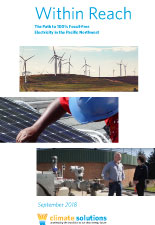 Within Reach
Within Reach
September 2018
The path to 100% fossil-free electricity in the Pacific Northwest. New research confirms that phasing out fossil fuels while phasing in non-fossil sources of energy can provide clean, reliable, affordable power to the Northwest. Transitioning to 100% fossil-free electricity will also avoid risky investments in infrastructure that will cause the region to exceed its committed carbon goals.
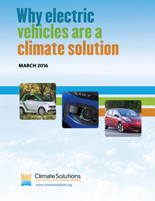 Why Electric Vehicles are a Climate Solution
Why Electric Vehicles are a Climate Solution
March 2016
Electric vehicles are entering mass production faster than any other technological fix for our oil habit, and they have a much lower climate impact than oil-powered cars. While EVs excite aficionados, it’s worth examining what kind of difference EVs would make for the climate, and whether they pose a challenge to utilities charged with supplying the necessary electricity.
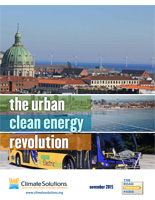 The Urban Clean Energy Revolution
The Urban Clean Energy Revolution
November 2015
To achieve significant carbon emissions reduction, local governments must help break down barriers that have prevented widespread, deep building energy efficiency to date. This briefing paper presents lessons learned from both the American Recovery and Reinvestment Act (ARRA) and Washington State investments in single family residential retrofits since 2009 to inform a regional retrofit strategy for King County, WA.
 Toward Sustainable Aviation Fuels
Toward Sustainable Aviation Fuels
October 2015
Commercial aviation accounts for 2 percent of global carbon pollution, a figure projected to grow to between 3 and 4.7 percent by 2050 without concerted action to curb emissions. Accordingly, a comprehensive solution to the world’s climate predicament requires a strategy to reduce aviation’s carbon footprint. Industry leaders recognize this imperative and accordingly have set a goal of reducing the sector’s carbon emissions 50 percent by 2050.
Breaking Down Barriers to Deep Energy Efficiency in King County
September 2015
To achieve significant carbon emissions reduction, local governments must help break down barriers that have prevented widespread, deep building energy efficiency to date. This briefing paper presents lessons learned from both the American Recovery and Reinvestment Act (ARRA) and Washington State investments in single family residential retrofits since 2009 to inform a regional retrofit strategy for King County, WA.
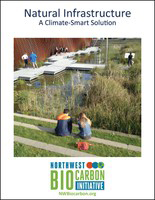 Natural Infrastructure: a Climate-Smart Solution
Natural Infrastructure: a Climate-Smart Solution
2013
This report explores the role that green or natural infrastructure can play in addressing cities' climate action imperatives. A supplement includes examples of natural infrastructure strategies in use throughout the Northwest that demonstrate how natural infrastructure provides climate solutions alongside a range of co-benefits.
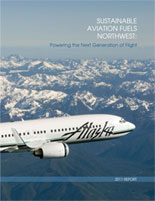 Sustainable Aviation Fuels: Powering the Next Generation of Flight in the Northwest
Sustainable Aviation Fuels: Powering the Next Generation of Flight in the Northwest
2011
Reflecting the perspectives of more than forty stakeholders involved with Sustainable Aviation Fuels Northwest, this report assesses current trends in aviation fuels and supply chains in the context of regional biomass technologies and feedstocks. The report concludes with priority policy action steps to create a sustainable aviation fuel industry in the Northwest.
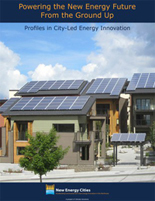 Powering the New Energy Future from the Ground Up
Powering the New Energy Future from the Ground Up
July 2012
This report examines the progress of a range of small- to medium-sized American cities that are pioneering the clean energy economy. These city-led efforts to catalyze local clean energy economic development are important to watch as federal grants sunset, especially in the absence of a comprehensive national energy or climate policy.
Building the Biocarbon Economy
2010
The biocarbon paradigm aims at leveraging plant growth and rich soils to halt the accumulation of carbon dioxide in the atmosphere and then to achieve a global turnaround. By making nature a climate ally humanity can actually begin to draw down carbon dioxide toward levels that prevailed before we began massively consuming fossil fuels. This is a series of briefings on biocarbon, specially focused on how the Pacific Northwest can mount regional initiatives to accelerate biocarbon progress.
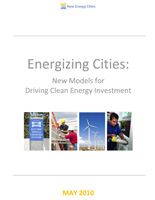 Energizing Cities: New Models for Driving Clean Energy Investment
Energizing Cities: New Models for Driving Clean Energy Investment
May 2010
A guide for local elected officials, county and city staff, energy utility managers, and community stakeholders to the steps that must be taken in designing and financing clean energy programs. This document describes how to develop, implement, and finance a clean energy program and offers examples of existing innovative clean energy financing models and useful resources to consult when developing a clean energy strategy. A joint project with Pareto Global, the University of Oregon Center for Sustainable Business, and ShoreBank Enterprise Cascadia.
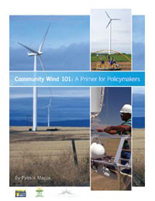 Community Wind 101: A Primer for Policymakers
Community Wind 101: A Primer for Policymakers
2008
A new model for wind development is emerging – community wind – in which local ownership plays a major role. Rural landowners, consumer-owned utilities, school districts, colleges and native tribes are putting installations on the ground ranging from single turbines to wind plants with hundreds of megawatts of capacity.
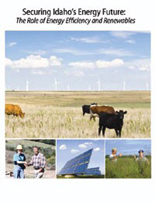 Securing Idaho's Energy Future
Securing Idaho's Energy Future
2008
Idaho can create thousands of jobs while helping to control energy costs, by developing renewable and energy efficiency resources.
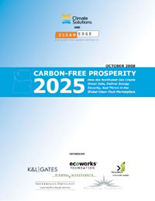 Carbon-Free Prosperity
Carbon-Free Prosperity
2008
In Carbon-Free Prosperity 2025, we highlight how Oregon and Washington can create green jobs, deliver energy security, and thrive in the global clean-tech marketplace. In a fiercely competitive environment, the Northwest is already leading in a number of critical and emerging clean-energy segments.
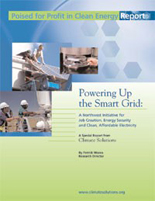 Powering Up the Smart Grid
Powering Up the Smart Grid
2007
A host of new smart energy devices and systems are emerging that can take pressure off overloaded grid infrastructure and power costs,dramatically improve grid reliability and security,and accelerate the growth of cleaner power generation. Smart energy is the application of digital information technology to optimize the electrical power system.
Energizing Rural America: How Renewable Electricity Standards Generate Rural Economic Prosperity
2007
A niche producer of clean energy today, agriculture could grow to supply 20-25 percent of U.S. energy needs over the next two decades. Study after study has concluded that spurring the production of renewable electricity will provide significant benefits for rural America. Economic models project significant increases in jobs, business activity and local tax revenues as a result. This report highlights these key findings.
Sustainable Biofuels
2007
Cellulosic biofuels offer tremendous environmental and economic sustainability advantages. They can be produced from organic residues that are now often a waste management and pollution problem.
 The New Harvest: Biofuels and Windpower for Rural Revitalization and National Energy Security
The New Harvest: Biofuels and Windpower for Rural Revitalization and National Energy Security
2005
America’s rural landscape is the place to substantially address both rural economic and national energy challenges. Clean energy development produces new income streams for farm communities and, by displacing oil and natural gas imports, improves U.S energy security.
 Farm Groups Pushing for Renewable Energy Standards
Farm Groups Pushing for Renewable Energy Standards
2004
Regional and state farm organizations are actively engaged in the push for state renewable energy and fuel standards. Already, sixteen states have enacted standards to grow markets for renewable electricity. Farm organizations, by representing the common voice of agriculture, have tremendous influence that can make all the difference in growing the renewable energy economy.
The Smart Energy Network: Electricity's Third Great Revolution
2003
Electrical power is entering its greatest revolution in a century, one that compares to Thomas Edison's creation of the world's first electrical grids and George Westinghouse's origination of long-distance power transmission. In prospect are profound changes in the ways electrical power is produced, delivered and used.
 Poised for Profit
Poised for Profit
2001, 2003
The reports in this section examine global markets for clean energy and prospects for developing a competitive, export-oriented clean energy industry in the Pacific Northwest.
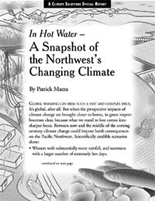 Global Warming
Global Warming
1999
By burning fossil fuels – coal, oil and natural gas – and cutting down forests, we are releasing gases that are thickening a heat-trapping blanket around the Earth. Learn more about how fossil fuel use is affecting our planet from this pair of reports.
Give for a brighter future
Connect
Join our email list to learn about what we do and how to get involved.
